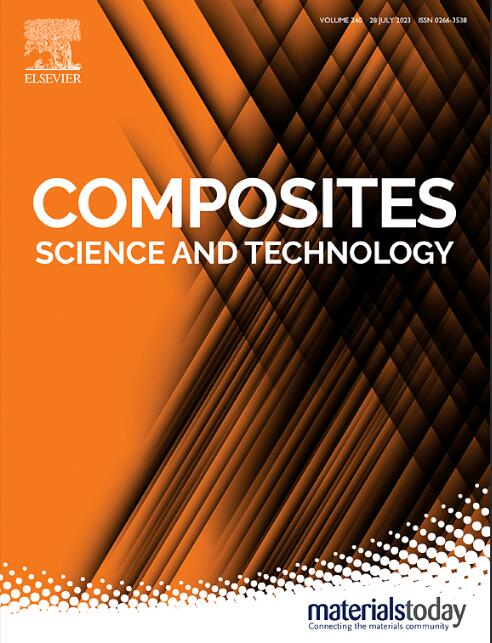Highly thermally conductive PEEK-based bi-selective radiative cooling composites with isolated structure for outdoor thermal management
IF 8.3
1区 材料科学
Q1 MATERIALS SCIENCE, COMPOSITES
引用次数: 0
Abstract
Polyether ether ketone (PEEK) is a special engineering plastic that exhibits a range of valuable characteristics, including outstanding mechanical capabilities, thermal stability, and flame retardancy. Currently, in order to address the global energy and environmental crises, the development of passive daytime radiative cooling (PDRC) composites with emerging functions represents a crucial area of research. In this study, PEEK-based bi-selective radiative cooling composites (hydroxy boron nitride and aramid fibres/PEEK, i.e., HO-BN&AMFs/PEEK) are initially reported to be connected to energy conservation, which demonstrate remarkable performance with a temperature reduction of 8.28 °C below the ambient temperature in actual tests. Furthermore, the in-plane thermal conductivity of the composites is observed to be 5.95 W m−1 K−1, which is 25.87 times that of pure PEEK. BN-OH, which possesses a wide bandgap, strong scattering, and high phonon transfer speed as a filler, can endow the resulting composites with excellent PRDC and high heat conduction performance. In addition, the integration of porous AMFs enhances the Mie scattering and filler selectivity of the composites. The EnergyPlus simulation results indicate that the multi-functional HO-BN&AMFs/PEEK composites can achieve considerable energy savings when employed in the construction industry. It highlights the fact that this study provides a promising approach for developing PEEK-based PDRC materials.

高导热peek基双选择性辐射冷却复合材料与隔离结构的室外热管理
聚醚醚酮(PEEK)是一种特殊的工程塑料,具有一系列有价值的特性,包括杰出的机械性能、热稳定性和阻燃性。目前,为了应对全球能源和环境危机,开发具有新兴功能的被动日间辐射冷却(PDRC)复合材料是一个重要的研究领域。在本研究中,首次报道了基于PEEK的双选择性辐射冷却复合材料(羟基氮化硼和芳纶纤维/PEEK,即HO-BN&;AMFs/PEEK)与节能有关,在实际测试中,该材料的温度比环境温度降低了8.28℃,表现出了显著的性能。此外,复合材料的面内导热系数为5.95 W m−1 K−1,是纯PEEK的25.87倍。BN-OH作为填料具有宽带隙、强散射和高声子传递速度,可以使复合材料具有优异的PRDC和高导热性能。此外,多孔AMFs的集成增强了复合材料的Mie散射和填料选择性。EnergyPlus仿真结果表明,HO-BN&;AMFs/PEEK多功能复合材料在建筑行业应用时可以实现可观的节能效果。它强调了这样一个事实,即本研究为开发基于peek的PDRC材料提供了一种有前途的方法。
本文章由计算机程序翻译,如有差异,请以英文原文为准。
求助全文
约1分钟内获得全文
求助全文
来源期刊

Composites Science and Technology
工程技术-材料科学:复合
CiteScore
16.20
自引率
9.90%
发文量
611
审稿时长
33 days
期刊介绍:
Composites Science and Technology publishes refereed original articles on the fundamental and applied science of engineering composites. The focus of this journal is on polymeric matrix composites with reinforcements/fillers ranging from nano- to macro-scale. CSTE encourages manuscripts reporting unique, innovative contributions to the physics, chemistry, materials science and applied mechanics aspects of advanced composites.
Besides traditional fiber reinforced composites, novel composites with significant potential for engineering applications are encouraged.
 求助内容:
求助内容: 应助结果提醒方式:
应助结果提醒方式:


